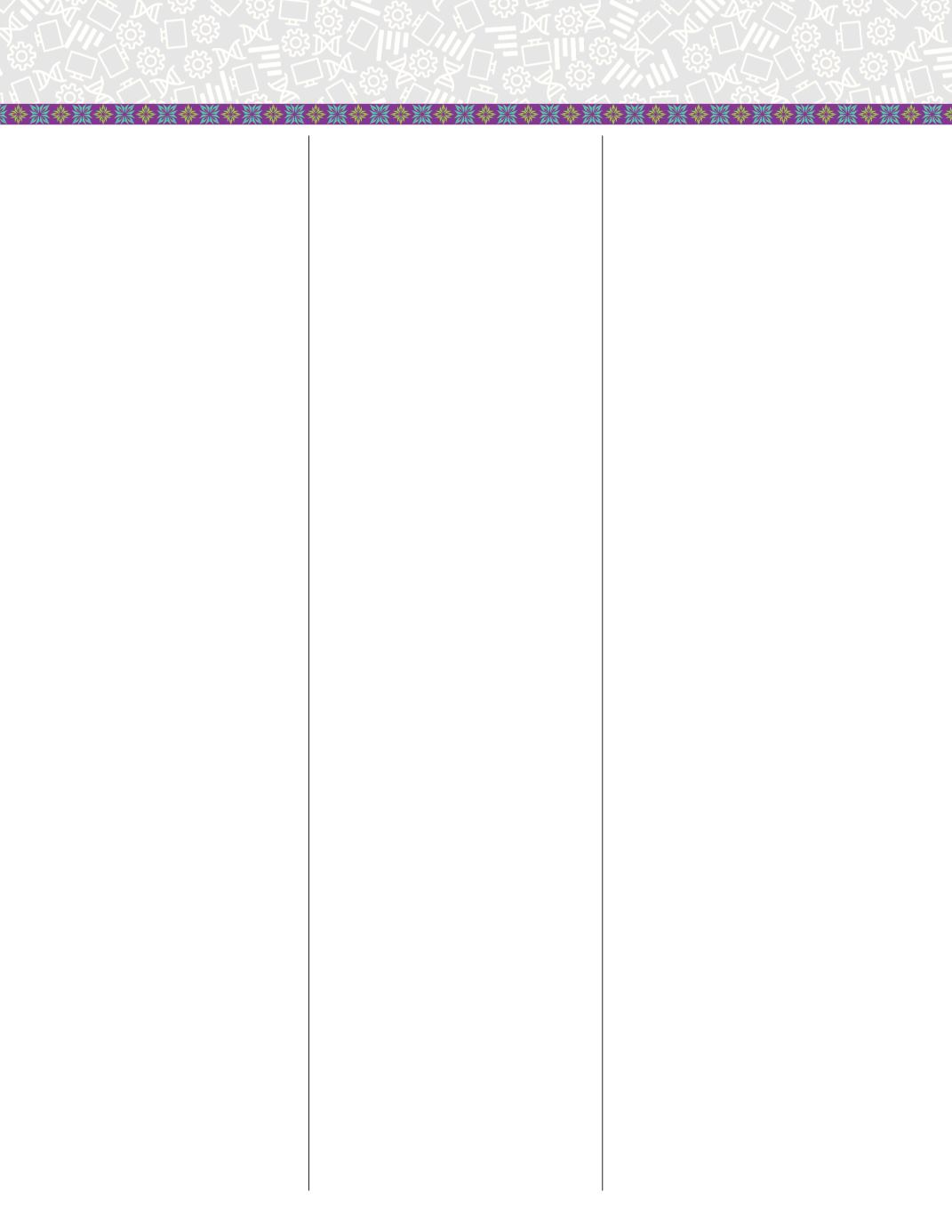
48
angle:
The number of degrees that a line
turns at a corner.
block-based language:
A programming language that runs
programs that have been created
using code blocks that resemble
puzzle pieces.
Blockly:
A visual programming language
that lets you drag and drop code to
create programs.
call a function:
To ask the computer to run the code
inside a function.
code:
Instructions for a computer.
coding:
The process of creating code.
computer science:
The study of computers and
computer-related ideas.
counter:
A placeholder that keeps track of a
value that is added to (or subtracted
from) each time through a for loop.
debugging:
Finding and fixing errors in a
program.
define the function:
To put code inside a function block
that tells the computer what to do
when that function is called inside a
program.
ending value:
The value where your counter will
stop counting in a for loop.
exterior angles:
The measurements of the outside of
an angle.
for loops:
Loops where you can control the
starting value, ending value, and
increment.
function:
A named piece of code that you
can call in a program whenever you
need it.
function editor:
A pop-up box that lets you create
or edit the code inside your
function.
increment:
The amount that your counter goes
up (or down) each time through a
for loop.
interior angles:
The measurements of an angle from
the inside of the shape.
loop:
A segment of code that runs over
and over without doing anything
else in between.
nested functions:
Functions placed inside other
functions.
nested loop:
A loop placed inside another loop.
parameters:
Special places where you can
customize certain blocks to do
things in different ways.
pattern:
Something that repeats multiple
times.
pixels:
Small squares laid out in a grid that
make up an image. A pixel can also
be a unit of measurement used
to specify how far along that grid
something travels.
play space:
The area of the website where
you see what your code does
when it runs.
program:
A set of instructions for a
computer.
remix:
To save a copy of a program so
you can build it into something
new. This allows you to use
functions and sections of code
you’ve already created, instead of
rebuilding them from scratch.
repeat loop:
The block that allows you to loop
a code sequence as many times
as you tell it to.
sequence:
The order in which things are
arranged.
software:
Programs that run on a machine
or computer.
starting value:
The value where your counter will
start counting in a for loop.
toolbox:
The area of the website where
you find the code blocks to create
your program.
workspace:
The area of the website where
you drag code to create a
program.
Glossary


